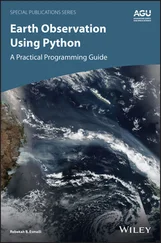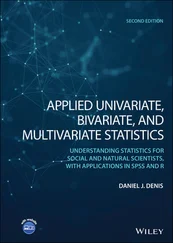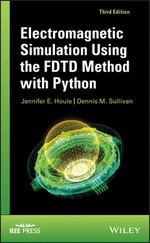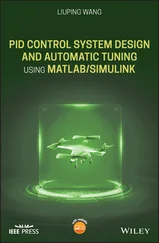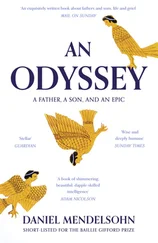Returning to our mediation example, if the contextof the research problem lends itself to a physical or substantive definition of mediation or any other physical process, such that there is good reason to believe Z is truly, substantively, “mediating,” then the statistical model can be used as establishing support for this already-presumed relation, in the same way a statistical model can be used to quantify the generational transmission of physical qualities from parent to child in regression. The process itself, however, is not due to the fitting of a statistical model. Never in the history of science or statistics has a statistical model ever generateda process. It merely, and potentially, has only describedone. Many students, however, excited to have bootstrapped those standard errors in their model and all the rest of it, are apt to draw substantive conclusions based on a statistical model that simply do not hold water. In such cases, one is better off not running a statistical model at all rather than using it to draw inane philosophically egregious conclusions that can usually be easily corrected in any introduction to a philosophy of science or research methodology course. Abusing and overusing statistics does little to advance science. It simply provides a cloak of complexity.
So, what is the conclusion and recommendation from what might appear to be a very cynical discussion in introducing this book? Understanding the science and statistics must come first. Understanding what can vs. cannot be concluded from a statistical result is the “hard part,” not computing something in Python, at least not at our level of computation (at more advanced levels, of course, computing can be exceptionally difficult, as evidenced by the necessity of advanced computer science degrees). Python code can always be looked up for applied sciences purposes, but “statistical understanding” cannot. At least not so easily. Before embarking on either a statistics course or a computation course, students are strongly encouraged to take a rigorous research designcourse, as well as a philosophy of sciencecourse, so they might better appreciate the limitations of their “claims to evidence” in their projects. Otherwise, statistics, and the computers that compute them, can be just as easily misused and abused as used correctly, and sadly, often are. Instructors and supervisors need to also better educate students on the reckless fitting of statistical models and computing inordinate amounts of statistics without careful guidance on what can vs. cannot be interpreted from such numerical measures. Design first, statistics second.
 Statistical knowledge is not equivalent to software knowledge. One can become a proficient expert at Python, for instance, yet still not possess the scientific expertise or experience to successfully interpret output from data analyses. The difficult part is not in generating analyses (that can always be looked up). The most important thing is to interpret analyses correctly in relation to the empirical objects under investigation, and in most cases, this involves recognizing the limitations of what can vs. cannot be concluded from the data analysis .
Statistical knowledge is not equivalent to software knowledge. One can become a proficient expert at Python, for instance, yet still not possess the scientific expertise or experience to successfully interpret output from data analyses. The difficult part is not in generating analyses (that can always be looked up). The most important thing is to interpret analyses correctly in relation to the empirical objects under investigation, and in most cases, this involves recognizing the limitations of what can vs. cannot be concluded from the data analysis .
Mathematical vs. “Conceptual” Understanding
One important aspect of learning and understanding any craft is to know where and why making distinctionsis important, and on the opposite end of the spectrum, where divisions simply blur what is really there. One area where this is especially true is in learning, or at least “using,” a technical discipline such as mathematics and statistics to better understand another subject. Many instructors of applied statistics strive to teach statistics at a “conceptual” level, which, to them at least, means making the discipline less “mathematical.” This is done presumably to attract students who may otherwise be fearful of mathematics with all of its formulas and symbolism. However, this distinction, I argue, does more harm than good, and completely misses the point. The truth of the matter is that mathematics are concepts. Statistics are likewise concepts. Attempting to draw a distinction between two things that are the same does little good and only provides more confusion for the student.
A linear function, for example, is a concept, just as a standard error is a concept. That they are symbolized does not take away the fact that there is a softer, more malleable “idea” underneath them, to which the symbolic definition has merely attempted to define. The sooner the student of applied statistics recognizes this, the sooner he or she will stop psychologically associating mathematics with “mathematics,” and instead associate with it what it really is, a form of conceptual development and refinement of intellectual ideas. The mathematics is usually in many cases the “packaged form” of that conceptual development. Computing a t -test, for instance, is not mathematics. It is arithmetic. Understanding what occursin the t -test as the mean difference in the numerator goes toward zero (for example) is not “conceptual understanding.” Rather, it is mathematics, and the fact that the concepts of mathematics can be unpacked into a more verbal or descriptive discussion only serves to delineate the concept that already exists underneath the description. Many instructors of applied statistics are not aware of this and continually foster the idea to students that mathematics is somehow separate from the conceptual development they are trying to impart onto their students. Instructors who teach statistics as a series of recipesand formulas without any conceptual development at all do a serious (almost “malpractice”) disservice to their students. Once students begin to appreciate that mathematics and statistics is, in a strong sense, a branch of philosophy “rigorized,” replete with premises, justifications, and proofs and other analytical arguments, they begin to see it less as “mathematics” and adopt a deeper understanding of what they are engaging in. The student should always be critical of the a priori associations they have made to any subject or discipline. The student who “dislikes” mathematics is quite arrogant to think they understand the object enough to know they dislike it. It is a form of discrimination. Critical reflection and rebuilding of knowledge (i.e. or at least what one assumes to already be true) is always a productive endeavor. It’s all “concepts,” and mathematics and statistics have done a great job at rigorizing and symbolizing tools for the purpose of communication. Otherwise, “probability,” for instance, remains an elusive concept and the phrase “the result is probably not due to chance” is not measurable. Mathematics and statistics give us a way to measure those ideas, those concepts. As Fisher again once told us, you may not be able to avoid chance and uncertainty, but if you can measure and quantify it, you are on to something. However, measuring uncertainty in a scientific (as opposed to an abstract) context can be exceedingly difficult.
The book can be used at either the advanced undergraduate or graduate levels, or for self-study. The book is ideal for a 16-week course, for instance one in a Fall or Spring semester, and may prove especially useful for programs that only have space or desire to feature a single data-analytic course for students. Instructors can use the book as a primary textor as a supplementto a more theoretical book that unpacks the concepts featured in this book. Exercises at the end of each chapter can be assigned weekly and can be discussed in class or reviewed by a teaching assistant in lab. The goal of the exercises should be to get students thinking critically and creatively, not simply getting the “right answer.”
Читать дальше
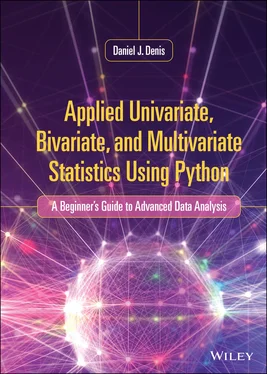
 Statistical knowledge is not equivalent to software knowledge. One can become a proficient expert at Python, for instance, yet still not possess the scientific expertise or experience to successfully interpret output from data analyses. The difficult part is not in generating analyses (that can always be looked up). The most important thing is to interpret analyses correctly in relation to the empirical objects under investigation, and in most cases, this involves recognizing the limitations of what can vs. cannot be concluded from the data analysis .
Statistical knowledge is not equivalent to software knowledge. One can become a proficient expert at Python, for instance, yet still not possess the scientific expertise or experience to successfully interpret output from data analyses. The difficult part is not in generating analyses (that can always be looked up). The most important thing is to interpret analyses correctly in relation to the empirical objects under investigation, and in most cases, this involves recognizing the limitations of what can vs. cannot be concluded from the data analysis .
